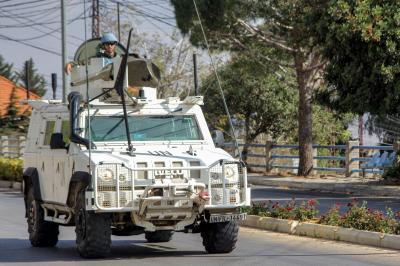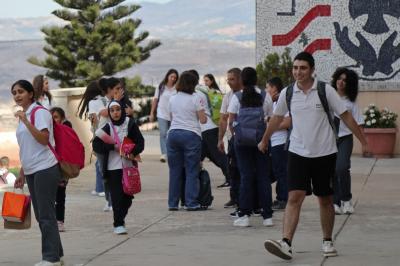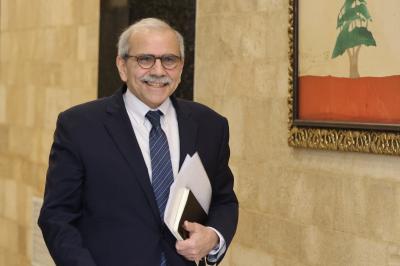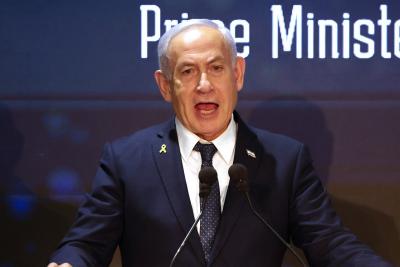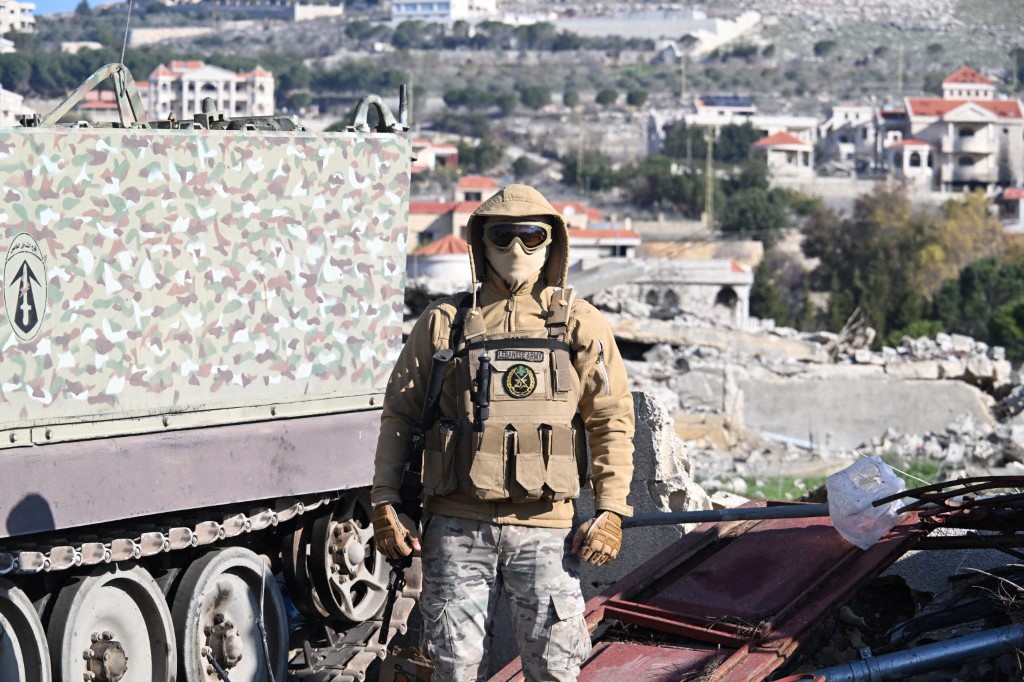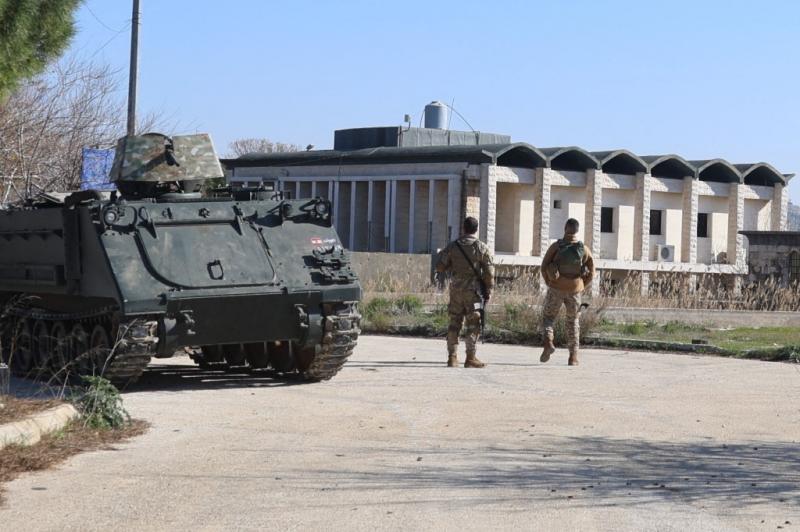I can’t help but be struck by how much today’s eves resemble the ones that came before Israel’s invasion of Lebanon. My memory takes me back to a meeting I attended as a secretary. After Egyptian President Anwar Sadat signed the Camp David Accords with Israel on March 26, 1979, the Lebanese Front tasked one of its senior members, Dr. Charles Malik, with visiting the United States to assess the situation and explore Lebanon’s fate in the wake of the agreement.
Dr. Malik, a well-known and highly respected expert on American politics, traveled to Washington and returned with insights he shared with the Lebanese Front’s leadership. He also met with the political council of the Lebanese Forces, which held regular meetings at the headquarters of the Guardians of the Cedars – Lebanese National Movement, under the leadership of “Abou Arz.” The council included two representatives from each party on the Lebanese Front.
In that meeting, Dr. Malik stated that the region was heading toward peace—sooner or later—and Egypt was only the beginning. He explained that Israel had not been certain which Arab country would be the first to sign a peace treaty—Egypt or Syria—but it was fully convinced that Lebanon would be the second, without a doubt. He warned of what Lebanon would face if it signed such a treaty, particularly the possibility of settling some of the Palestinian refugees registered with UNRWA on Lebanese soil.
That peace never came. Instead, on June 6, 1982, Israel invaded the Lebanese territory, entered Beirut, and forced the PLO into exile in Tunisia under the U.S.-brokered agreement. Lebanon and Israel then began negotiations for an Israeli withdrawal, which led to the May 17, 1983 Agreement. This agreement was ratified by Lebanon’s Parliament and received Arab—and particularly Syrian—approval. Yet, it was annulled in March 1984 following the Mountain War and the February 6 uprising, which saw the Amal Movement seize control of what was then called “West Beirut,” after the Geneva and Lausanne conferences.
And now, we find ourselves once again amid a ceasefire agreement—strikingly similar to the one that was annulled 42 years ago. One can’t help but wonder: How much of our lives have we lost only to return to the same point? And why, some now ask, did we cancel that agreement in the first place?
This current ceasefire is not just an end to fighting—it marks the beginning of a new phase, one aimed at dismantling Hezbollah’s military capabilities as part of a sweeping offensive targeting the entire Axis of Resistance: Gaza, Hezbollah in Lebanon, Assad’s Syria, and likely Yemen and Iran in the next stages. This campaign has reshaped the region and may reflect fundamental changes to the Sykes-Picot Agreement, which once divided the Ottoman Empire’s territories between Britain and France.
Under heavy American pressure, Lebanon’s newly approved authorities—endorsed by Washington—now face ongoing Israeli violations of the ceasefire—the ultimate goal: political negotiations between Lebanon and Israel, paving the way for a peace agreement. Washington, supported by parts of the international community and some internal actors, has made disarming Hezbollah a precondition for reconstruction. In fact, the U.S. has threatened to prolong Lebanon’s isolation and block any aid from reaching the country unless this demand is met.
If the current circumstances mirror those of the late 1970s, will the outcome be the same? I vividly recall what U.S. Secretary of State George Shultz said when Lebanon annulled the May 17 Agreement. He stated that the agreement should have been signed on December 28, 1982—the day after negotiations began in Khaldeh, Kiryat Shmona, and Netanya. Washington, eager to implement President Ronald Reagan’s September 1, 1982 initiative (which aimed to resolve the Arab-Israeli conflict), viewed Lebanon’s delay as obstruction.
The Soviet Union seized on this delay to support its crumbling allies in Lebanon, leading to the Mountain War, the unraveling of President Amin Gemayel’s rule, and a shift in the Lebanese power balance in favor of the Amal Movement and the National Movement. As Gemayel’s presidency faltered, and with the symbolic shelling of mountain areas by the U.S. aircraft carrier USS New Jersey, the U.S. eventually withdrew from the Lebanese arena.
Today, no international power is backing the defeated Axis of Resistance. The losing parties lack the strength to recover, and pressure is mounting to weaken—or even eliminate—Hezbollah altogether.
So how will Lebanon’s still-fragile authorities act? Their state of confusion mirrors that of the average Lebanese citizen crying out in despair: “save me I am between 2 fires”- Or the bewildered man caught “between two blades.” Or like someone stuck between the proverbial hammer of the Americans and the anvil.
Forcibly disarming Hezbollah would carry dire consequences. But failing to do so may trigger severe sanctions and international measures against Lebanon—perhaps even giving Israel the green light to resume attacks on the South, the Bekaa, and Beirut’s southern suburbs, just as it has done in Gaza.
As for peace with Israel, Lebanon once hoped to be the last to sign, as it declared at the Madrid Peace Conference in 1991—after the PLO and Jordan had already done so, and its own stance was tied to Syria’s. But today, Lebanon is being pushed to the table, regardless of what its officials may deny about proposals being made behind closed doors by the U.S. and international actors, or how hard they try to pressure Washington to change course.
Has everyone forgotten that Israel still occupies seven points in South Lebanon—and openly declares it has no intention of relinquishing them? On the contrary, it has even expressed its intention to annex them during upcoming border demarcation talks.
So here’s a tearful salute to Lebanon’s new so-called "sovereigntists"—and to the Lebanese mothers who hope never to relive the story of Aisha, the mother of the last King of Granada, who watched her son leave the Alhambra in tears and said:
“Weep, weep like a woman on a kingdom you could not defend like a man.”
 French
French

